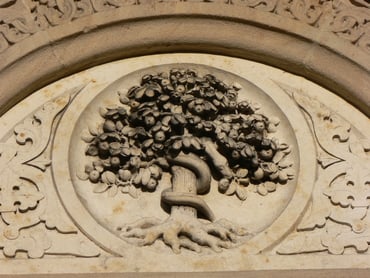251. The reason why the “serpent” means all evil in general, and specifically the love of self, is that all evil has had its rise from that sensuous part of the mind, and also from that memory-knowledge [scientifico], which at first were signified by the “serpent;” and therefore it here denotes evil of every kind, and specifically the love of self, or hatred against the neighbor and the Lord, which is the same thing. As this evil or hatred was various, consisting of numerous genera and still more numerous species, it is described in the Word by various kinds of serpents, as “snakes” “cockatrices” “asps” “adders” “fiery serpents” “serpents that fly” and “that creep” and “vipers” according to the differences of the poison, which is hatred. Thus we read in Isaiah:
Rejoice not thou, whole Philistia, because the rod which smiteth thee is broken, for out of the serpent’s root shall go forth a cockatrice, and his fruit shall be a flying fire-serpent (Isaiah 14:29).The “serpent’s root” denotes that part of the mind, or that principle, which is connected with the senses and with memory-knowledge [est sensuale et scientificum]; the “cockatrice” denotes evil originating in the falsity thence derived; and the “flying fire-serpent” the cupidity that comes from the love of self. By the same Prophet also similar things are elsewhere thus described:
They hatch cockatrice’s eggs, and weave the spider’s web; he that eateth of their eggs dieth, and when it is crushed there cometh out a viper (Isaiah 59:5).
The serpent described here in Genesis is called in the Revelation the “great and red dragon” and the “old serpent” and also the “devil and satan” that “deceives the whole world” (Revelation 12:3, 9; 20:2), where, and also in other places, by the “devil” is not meant any particular devil who is prince over the others, but the whole crew of evil spirits, and evil itself.







